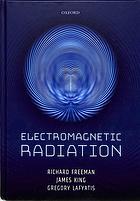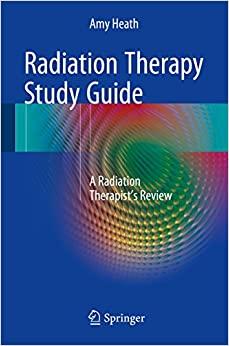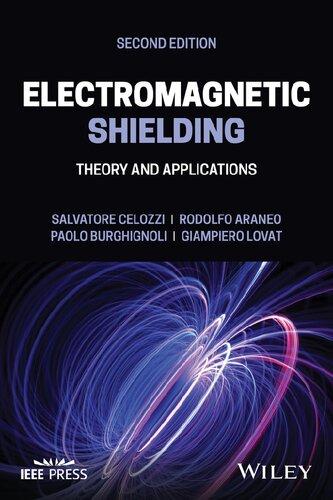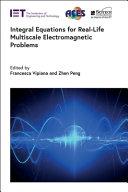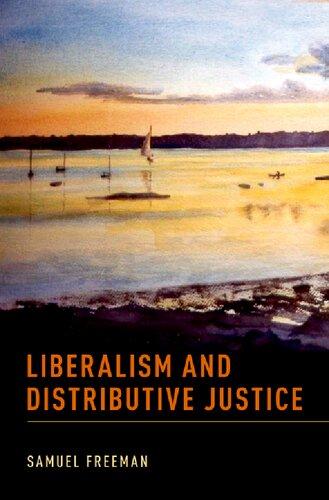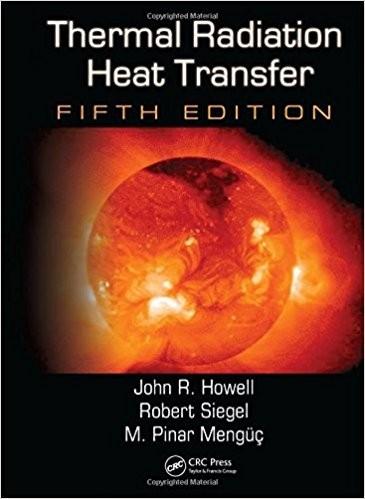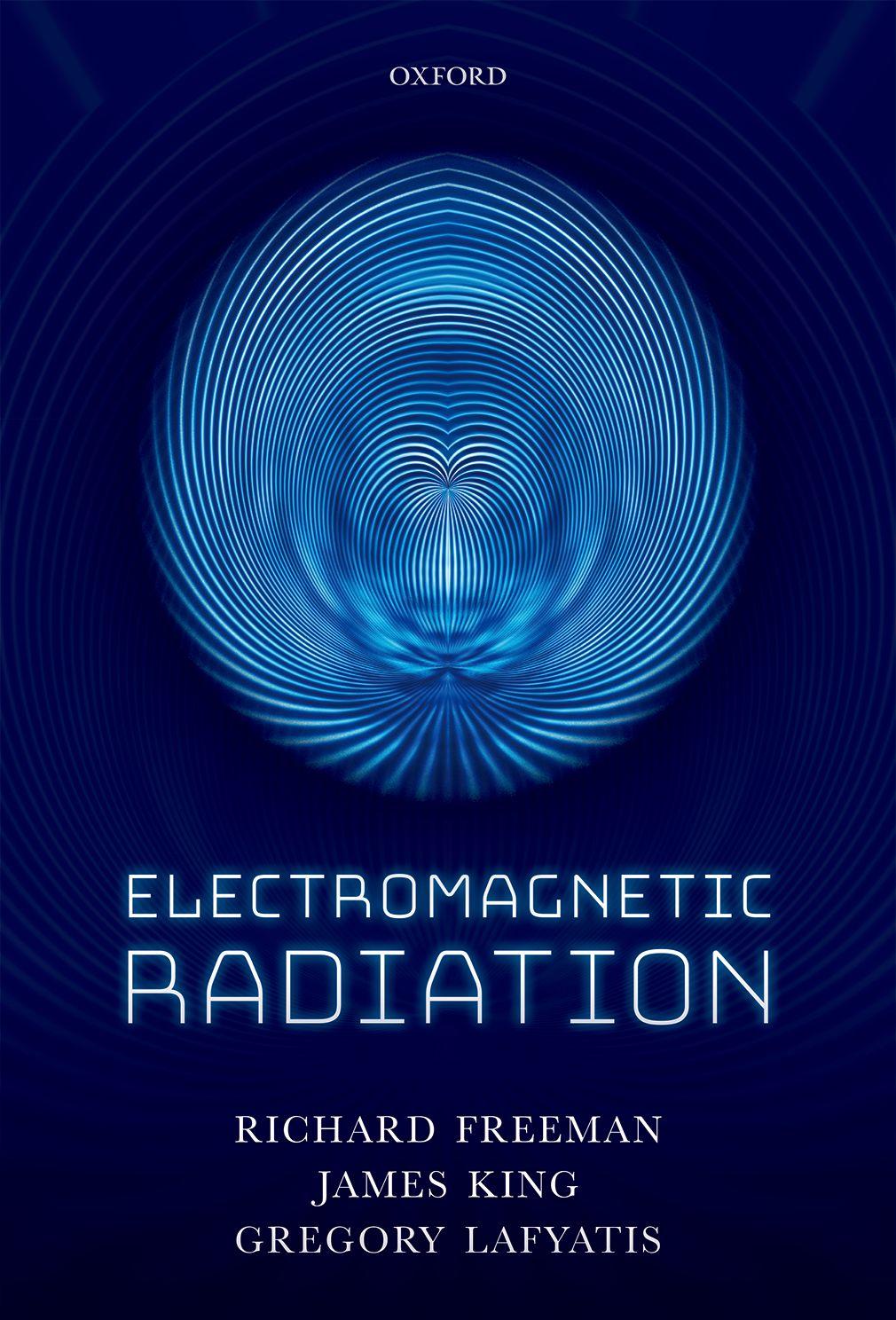ElectromagneticRadiation
RichardFreeman,JamesKing, andGregoryLafyatis
GreatClarendonStreet,Oxford,OX26DP, UnitedKingdom
OxfordUniversityPressisadepartmentoftheUniversityofOxford. ItfurtherstheUniversity’sobjectiveofexcellenceinresearch,scholarship, andeducationbypublishingworldwide.Oxfordisaregisteredtrademarkof OxfordUniversityPressintheUKandincertainothercountries
©RichardFreeman,JamesKing,GregoryLafyatis2019
Themoralrightsoftheauthorshavebeenasserted
FirstEditionpublishedin2019
Impression:1
Allrightsreserved.Nopartofthispublicationmaybereproduced,storedin aretrievalsystem,ortransmitted,inanyformorbyanymeans,withoutthe priorpermissioninwritingofOxfordUniversityPress,orasexpresslypermitted bylaw,bylicenceorundertermsagreedwiththeappropriatereprographics rightsorganization.Enquiriesconcerningreproductionoutsidethescopeofthe aboveshouldbesenttotheRightsDepartment,OxfordUniversityPress,atthe addressabove
Youmustnotcirculatethisworkinanyotherform andyoumustimposethissameconditiononanyacquirer PublishedintheUnitedStatesofAmericabyOxfordUniversityPress 198MadisonAvenue,NewYork,NY10016,UnitedStatesofAmerica
BritishLibraryCataloguinginPublicationData Dataavailable
LibraryofCongressControlNumber:2018953425 ISBN978–0–19–872650–0 DOI:10.1093/oso/9780198726500.001.0001
Printedandboundby CPIGroup(UK)Ltd,Croydon,CR04YY LinkstothirdpartywebsitesareprovidedbyOxfordingoodfaithand forinformationonly.Oxforddisclaimsanyresponsibilityforthematerials containedinanythirdpartywebsitereferencedinthiswork.
PartIIIElectromagnetismandSpecialRelativity
5IntroductiontoSpecialRelativity
5.1Historicalintroduction–1666to1905
5.1.1Thenatureofspaceandtime
5.1.2Thenatureoflight
5.1.3Michelson–Morleyexperiments
5.2EinsteinandtheLorentztransformation
5.2.1Einstein’sapproach
5.2.2TheLorentztransformation:covarianceamonginertialframes
5.3Theinvariantintervalandthegeometryofspace-time
5.3.1Minkowskispace-timediagrams
5.3.2Physicalconsequencesofspecialrelativity
5.4Vectorspaceconcepts
5.4.1Contravariantandcovariantvectors
5.4.2Themetrictensor
5.4.3Generationofother4-vectorsand4-tensors
5.5Someimportantgeneral4-vectors
5.5.1The4-gradientoperator
5.5.2The4-vectorvelocity
5.5.3The4-vectormomentum
5.5.4The4-vectorforce
5.6Someimportant“E&M”4-vectors
5.6.1The4-wavevector
5.6.2The4-currentdensity
5.6.3The4-potential(inLorenzGauge)
5.7Othercovariantandinvariantquantities
5.7.1Theangularmomentum4-tensor
5.7.2Space-timevolume
5.7.3Space-timedeltafunction
5.8Summaryof4-vectorresults
5.9Maxwell’sequationsandspecialrelativity
5.9.1ManifestcovarianceofMaxwell’sequations
5.9.2Theelectromagneticfieldtensor
5.9.3Simplefieldtransformationexamples
5.10TheEinsteinstress-energytensor
5.11Discussions
6.1Lienard–Wiechertpotentials
6.1.1Derivationbyintegraltransform
6.1.2Derivationbygeometricconstruction
6.2Radiationfieldsfromasinglechargeundergoingacceleration
6.3Powerradiatedfromanacceleratedcharge
6.3.1LowvelocitiesandclassicalLarmor’sformula
6.3.2Radiatedpowerforrelativisticparticles
6.4Accelerationparallelandperpendiculartovelocity
6.4.1Angulardistributionforacceleration
6.6Synchrotronradiation
6.7Fieldsfromasinglechargemovingwithconstantvelocity
6.7.1Parametrizationofthefields
6.7.2Spectralenergydensityofthefields
6.7.3Numberofphotonsassociatedwithfieldsofapassingcharge
7.3.1Equationsofmotion
7.4TheHamiltoniandensityandcanonicalstress-energytensor
7.4.1FromtheMaxwellstresstensortothe4Dstress-energytensor
7.4.2Hamiltoniandensity:the“00”canonicalstress-energytensorcomponent255
7.4.3Canonicalstress-energytensorandconservationlaws
7.4.4Canonicalelectromagneticstress-energytensor
7.4.5Symmetricelectromagneticstress-energytensor
7.4.6Angularmomentumdensityoffields
7.4.7Electromagneticstress-energytensorincludingsourceterms
8FieldReactionstoMovingCharges
8.2.2Somequalitativeargumentsfortheself-force
8.3Abraham–Lorentzformulaandtheequationsofmotion
8.3.1Theequationsofmotion
8.3.2Landau–Lifshitzapproximation
9.9.1Measuringtheopticalconstantsofamaterial
10.1.1TheDrudemodeloffreeelectrons
12.3.1Kirchhoff’sintegraltheorem
12.3.2Kirchhoff’sdiffractiontheory:boundaryconditions
12.3.3Alternateboundaryconditions:Rayleigh–Sommerfelddiffraction
12.3.4Babinet’sprinciple
12.3.5Fresnelapproximation
12.3.6Fraunhofer(far-field)diffraction
12.3.7Fresneldiffractionofrectangularslit:thenear-field
12.4.2Fourieroptics(far-field)
12.4.3Tightfocusingoffields
12.4.4Diffractionlimitsonmicroscopy
13.7.1Generalfeaturesofwaveguides
13.7.3Transmissionlinesandcoaxialcables:TEMmodes
13.8One-dimensionalopticalwaveguides:therayopticpicture
13.8.1Thethree-layerplanarwaveguide:thewavesolutionsofMaxwell’sequations553
13.8.2Fiberoptics:thestep-indexcircularwaveguide
13.8.3Higherordermodes,singlemodefibers,anddispersion
AVectorMultipoleExpansionoftheFields
A.1Vectorsphericalharmonics
A.1.1VSHexpansionofgeneralradiationfields
A.2Multipoleexpansionofelectromagneticradiation
A.2.1Non-homogeneousfieldwaveequations
A.2.2VSHexpansionofthefieldwaveequations
A.2.3Parityconsiderations
A.2.4Multipoleexpansioninasource-freeregion
A.3Multipoleradiation:energyandangularmomentum
A.3.1EnergydensityandthePoyntingvector
EssentialsofElectricity andMagnetism
• ReviewofMaxwell’ssteady-stateequationsinvacuum
• ModificationsofMaxwell’ssteady-stateequationsinthepresenceofmatter:electricandmagneticpolarization
• GeneralizationofMaxwell’sequationsinthepresenceoftime varyingsourcesleadingtoacausalunificationoffieldsinthe formofadditionalsources
• OriginofelectromagneticradiationdirectlyfromtimedependentMaxwell’sequationsandtheresponseofmaterials toelectromagneticradiation
• Electromagneticconservationlaws,includingelectromagneticenergy,momentumandangularmomentum
1.1Maxwell’sstaticequations invacuum
Maxwell’sequationsarethefoundationalequationsofclassicalelectromagneticphenomena.Theyarecomprisedoffour1storderlinear partialdifferentialequationsandareessentiallystatementsthatdefine theelectricandmagneticvectorfields(e.g.,specifytheirdivergence andcurl)intermsofspecificboundaryconditionsandelectriccharge andcurrentdistributions.ThemathematicaloriginsofMaxwell’s equationscanbefoundinthebasicinversesquarelawsofelectrostaticsandmagnetostatics,whichweremainlyformulatedinthelate eighteenththroughearlynineteenthcenturies,butfarfromexclusively, throughtheobservationsandworkofCoulomb,Ampere,Biot,and Savart.WhencoupledwithFaraday’sconceptofafieldandthe generalmathematicaltheoremsofGauss,Laplace,andPoisson,we begintoseetheformalmoderndescriptionofelectricandmagnetic phenomena–atleastforsteady-stateconditionsinvacuum.
ElectromagneticRadiation.RichardFreeman,JamesKing,GregoryLafyatis, OxfordUniversityPress(2019).©RichardFreeman,JamesKing,GregoryLafyatis. DOI:10.1093/oso/9780198726500.001.0001
1.1.1Electrostaticequations
TheintegralformofthelawofelectrostaticsorCoulomb’slawis:
wherethepositionvectors r and r o refertothesourceandobserver locations,respectively,and ρ isthe(static)chargedensity.Wenote fromthisequationanumberofimportantfeatures:first,thestatic electricfieldfallsoffastheinversesquareofthedistancetothe observerandisproportionaltothechargedensity;second,acontributiontothefieldat r o duetoanelementofcharge ρ (r ) dV willpoint along R = r o − r ,thedirectionfromsourcetoobserver,withapolarity dependentonthechargesign;andthird,thefield E (r o ) isalinear vectorsuperpositionofcontributionsfromchargeelementsintegrated overallspace,independentoftime.Ifwenowlookatthedivergence takenwithrespectto ro ofthisfield,
wherewehaveused ∇· ( ˆ R/R2 ) = 4πδ(R).Thisisthedifferentialform ofwhatisknownasGauss’lawandisequivalenttoCoulomb’slaw. ItisthefirstofMaxwell’sequations.Inthisform,weseethatany divergenceinthefieldislocaltoandproportionaltothechargedensity. Initsintegralform,whichcanbedirectlyobtainedfromEq.1.2using thedivergencetheorem,itstatesthattheintegralofthe E fieldover anarbitraryclosedsurfaceisequaltothechargeenclosedwithinthat surfacedividedby εo .Notingthat R/R3 =−∇ (1/R),Eq.1.1canbe rewrittenasagradient
where φ (r o ) isthescalarpotential.Becauseingeneralthecurlofa gradientvanishes,itfollowsfromEq.1.3that ∇× E (r o ) = 0 (1.4)
whichisthesecondofthetwoelectrostaticMaxwell’sequationsand statesthatelectrostaticfieldsareirrotational(curlless)everywhere. TheintegralformofEq.1.4,whichcanbedirectlyobtainedusing Stokes’stheorem,statesthatthelineintegralofthe E fieldaroundan arbitraryclosedcurveiszero,thusconfirmingitsstatusasagradient.
Becausethecurlofagradientisalwayszero,Eqs.1.2and1.4can bemorecompactlyexpressedintermsof φ as ∇ 2 φ = ρ/εo (Poisson’s equation)or ∇ 2 φ = 0(Laplace’sequation)inchargefreeregions.
1.1.2Magnetostaticequations
TheintegralformofthelawofmagnetostaticsortheBiot–Savart lawis:
where,asbefore,thedistanceanddirectionfromasourceelementto theobservationpointisrepresentedby R = r o − r butthesourceis nowadistributionofsteady-statecurrentdensityelements, J (r ) dV , eachcontributingto B (r o ) anamountproportionalto J (r ),inthe direction, J (r ) × (r o − r ),givenbytheright-handrule.Also,aswith theelectricfield,thestaticmagneticfield(duetoeachcurrentelement) fallsoffastheinversesquareofthedistance.Following,analogously, theelectrostaticdevelopmentofSection1.1.1toobtainadifferential form,weconsiderthecurlof B
which,withsomemanipulation(see Discussion1.1),canbewritten
where,again,wehaveused ∇· ( ˆ R/R2 ) = 4πδ(R).ThisisthedifferentialformofwhatisknownasAmpere’slawandisequivalenttothe Biot–Savartlaw.ItisthethirdofMaxwell’sequations.Theintegral formofEq.1.7,whichcanbedirectlyobtainedusingStokes’stheorem, statesthatthelineintegralofthe B fieldaroundanarbitraryclosed curveisequaltothecurrentenclosedbythatcurvemultipliedby μo .
ToobtainthefourthdifferentialformofMaxwell’sequationsunder steady-stateconditionsintheabsenceofmatter,wetakethedivergence ofEq.1.5toobtain1
∇· B (r o ) = 0 (1.8)
whichisthesecondofthetwomagnetostaticMaxwell’sequations andstatesthatmagnetostaticfieldsaresolenoidal(divergenceless) everywhere.TheintegralformofEq.1.8,whichcanbedirectly
1 Expandthedivergenceoftheintegrand ofEq.1.6
wherethefirsttermvanishesbecausethe J isnotafunctionoftheobservercoordinates. Forthesecondterm,weagainnotethat R R3 = −∇ 1 R andthecurlofagradientvanishes.
2 Thomson,J.J.Ontheelectricand magneticeffectsproducedbythemotion ofelectrifiedbodies. PhilosophicalMagazine,11,229–249,https://doi.org/10.1080/ 14786448108627008(1881).
3 Heaviside,Oliver.Ontheelectromagneticeffectsduetothemotionofelectrificationthroughadielectric. Philosophical Magazine 324(April1889).
4 TherelativisticformulationofEq.1.13 isthesame,withtheprovisothattheforceis relatedtothevelocityby
obtainedusingthedivergencetheorem,statesthatthesurfaceintegral ofthenormalcomponentof B fieldaroundanarbitraryclosedsurface iszero.Because B hasnodivergencevalue,itcanbewrittenasthecurl ofanotherfield, A.Thisvectorfield,knownasthe“vectorpotential”, isanalogoustothescalarpotential, φ ,encounteredinelectrostatics. So,continuingincloseanalogywithelectrostatics,wearetemptedto writeEqs.1.7and1.8intermsofasinglesecondorderdifferential equationofthepotentialsuchasthePoissonorLaplaceequations. Thus,wenotethatmuchlikewriting E as −∇ φ automaticallysatisfies ∇× E = 0andturns ∇· E = ρ/εo intothePoissonequation,writing B as ∇× A automaticallysatisfies ∇· B = 0andturns ∇× B = μo J into ∇× ∇× A =∇ ∇· A −∇ 2 A = μo J .Thisisamorecompactway ofexpressingEqs.1.7and1.8.Insummary,Maxwell’sequationsfor steadystateandintheabsenceofmatterare:
1.1.3Lorentzforce
Theeffectsofmagneticandelectricfieldsonacharge q weregiven theirmodernformbyLorentzin1892,buildingontheworkofThomson’s(1881)2 andHeaviside’s(1889)3 extrapolationsofMaxwell’s
expositionofhisequations(1865):
Thisdescriptionofthetotalforceonachargeinthepresenceof externalfields E and B hasbeensowellverifiedexperimentally,even forchargevelocitiesapproachingthespeedoflight,thatitisusedas anempiricaldefinitionof E and B atanyspace-timepointwhen q, F , v areknown.4
1.2Maxwell’sstaticequationsinmatter
Withinmatter,wheretherearechargesthatrespondtoexternalfields bymovingfreely,orchargesboundtootherchargedobjectsthat orientordisplaceinresponsetoexternalfields,Maxwell’sequations becomeexceedinglydifficulttosolveexactly.Itisusefulthen,when
workingwithfieldsinmatter,todividetheproblemconceptuallyinto microscopicandmacroscopicfieldswiththemicroscopicfields,ina sense,beingthetrueyetpracticallyintractablefieldsinalltheirgrainy detail,whilethemacroscopicfieldsarespatialandtemporalaverages ofthemicro-fieldsoverregionsandtimesthataremicroscopically largeyetmacroscopicallysmall.Inthissubsectionitwillbeshownthat theresponseofmattertoappliedfieldsgenerallyresultsinso-called “bound”sourcesofchargeandcurrentdensityandformaterialswith acomponentoffreeelectrons,anadditionalsourceof“free”current. WhilethiswillmodifythetwoinhomogenousMaxwell’sequations,it will,inthesteady-statecase,leaveunaffectedthetwohomogeneous equations.Asaconsequenceofthis,wecanimmediatelyseethat themacroscopicversionsofthetwohomogeneousequationswillbe identicaltothemicroscopicversions.Thatis,
1.2.1Responseofmaterialtofields
Polarization,eitherelectric P (r ) ormagnetic M (r ),isdefinedmacroscopicallyasdipolemomentperunitvolumeanditsexistencewithin amaterialisaresultofthelocalalignmentofatomicormolecular electric p ormagnetic m dipolemomentswithinamacroscopically smallbutmicroscopicallylargevolumeabouttheevaluationpoint, r Thisalignmentcanbepermanentlyfrozenintothematerialasinthe caseofferromagnetsandthelessoftenencounteredelectricanalogs knownaselectrets.Alignmentofdipolesresultinginpolarizationis, however,morecommonlyaresponsetothepresenceofelectricand magneticfields.Twobasictypesofdipoleresponsehavebeenfound: Eitherpre-existingdipolemomentsarerotatedintoalignmentbythe fieldsordipolemomentsareinducedbytheappliedfieldswithin thematerial.Awellknownexampleofthefirsttypeofresponseto electricfieldsoccurswithinwaterbecausethepositiveandnegative chargecentersofthe“polar”H2 Omoleculeareintrinsicallyseparate. Similarly,thepre-existingmagneticatomicdipoles(duetounpaired electrons)withinparamagneticmaterialswillalignwithanapplied magneticfield.Thesecondtypeofresponseinwhichdipolemoments areinducedoccursinallmaterialsbutismostnoticeablewithin“nonpolar”materialsdevoidofpre-existingdipoles.Aclassicalpictureof suchamaterialresponsetoanelectricfieldisthatofneutralatomswith initiallyoverlappingpositive(nuclear)andnegative(electron)charge centersthat,uponapplicationofthefield,getstretchedinopposite directionstothemechanicallimitsoftheirbonds,thusformingelectric dipolemoments.Theinductionofmagneticdipolemomentsbya
magneticfieldisknownasdiamagnetism.Inthiscase,thereisno stretchingbutrathercurrentswithinatomicormolecularstructures areinducedviaFaradayslaw(Section1.4.1)resultinginanantialignmentofthedipolestothefield.Macroscopicpolarizationinterms ofthemicroscopicelectricdipolemomentsisgivenas:
where < p (r ) > istheaverageofalltheelectricdipolemomentsin amacroscopicallysmallbutmicroscopicallylargevolumecentered atthelocation r ,and N (r ) isthenumberofsuchobjectsperunit volume.Inthecaseofmagneticallyactivematerials,whetherthereisan orientationofmagneticobjects,orinducedcurrentscenteredaround atomsormolecules,thecorrespondingexpressionisthegenerationof amacroscopicmagneticpolarizationor“magnetization”:
whereinthesameway < m (r ) > istheaveragemagneticdipole centeredatthelocation r and N (r ) isthenumberofobjectsperunit volumeatthatlocation.
Themostgeneralinstanceofmaterialresponsetoafieldisnot linear,isotropicorhomogeneousandthereforerequiresanon-linear, spatiallydependenttensorforitsmathematicaldescription.Inthe presentcase,wewillinitiallyassumeasimplermaterialthatislinear andisotropicbutnotnecessarilyhomogeneous.Inthiscase,for example,theaveragedipolemomentandthepolarizingelectricfield E p withinthematerialarerelatedbyacoefficient, α ,knownasthe polarizability:
where εo isgenerallyincludedforlaterconvenience.Combining Eq.1.17withEq.1.15givesusanexpressionforthepolarizationin termsofthepolarizingfield:
Now,itisaneasilyoverlookedbutimportantpointthatthemacroscopicappliedfieldamplitude, E ,withinthematerialisnotnecessarily theaverageamplitudeofthepolarizingfield, E p ,feltbytheatoms andmoleculesinthematter.Indeed,bothfieldamplitudesareaverage values,however,whiletheappliedfieldresultsfrommacroscopically averagedsurfaceandvolumechargedensitiesexternaltothematerial, thepolarizingfieldrefersspecificallytovolumeslocaltotheatomsand
moleculesandsoadditionallytakesintoaccountthefieldsofallnearby dipoles.Thesourceoftheseadditionallocalfieldsarerepresented intheformofboundchargesthat,alongwithboundcurrents,are discussednext.
1.2.2Boundchargesandcurrents
Thepresenceofpolarizationormagnetizationindielectricandmagneticallyactivematerialsischaracterizedbytheexistenceof“bound” chargesandcurrents.Forthecaseofpolarizedmaterial,thiscanbe shownbyconsideringthepotential atapoint r o duetoallthe electricdipolemomentswithinanon-uniformlypolarizedmaterialin avolume, V
where P (r ) dV = d p isamacroscopicallysmallbutmicroscopically largeelementofdipolemomentwithinthematerialandasusual, r is asourcepointand R = r o − r isthevectorpointingfromthesourceto theobservationpoint.Throughtheuseofintegrationbypartsandthe divergencetheorem,thisequationcanbere-expressedas5
where S isthesurfaceboundingthematerialand ˆ n istheoutward surfacenormalatpointsofintegralevaluation.Thenumeratorstimes theirrespectivedifferentialshavetheformandunitsofelementsof chargesothatweequatethemtosurfacechargeandvolumecharge densities.Thatis,
Physically,thisisnothardtovisualize.Forexample,toseethe latterequivalence,considerasmall,yetstillmacroscopicvolume withinthenon-uniformlypolarizedmaterialandinthisregionlet therebegenerallypositivedivergence.Considerjustthe x direction. Becausealargerpolarizationmeansmorepositivechargedisplaced inthepositive x directionandmorenegativechargedisplacedin thenegative x direction,apositivedivergencemeansthatmorepositivechargesarepushedoutoftherightboundingsurfacethan negativechargesarepushedoutoftheleftboundary,thusleavinga netnegativechargedensity.
andthenusethedivergencetheoremonthe firstterm.
6 Thevectorpotential,atafieldpoint ro , resultingfromasuperpositionofallthelittle magneticdipolemomentswithinavolumeis:
Bysimilarconsiderationsofthevectorpotentialatapoint r o dueto allthemagneticdipolemomentswithinanon-uniformlymagnetized materialitcanbeshownthat
Usingtheidentity
,andintegrating byparts,
whichistosaythatthecurlofthemagnetization ∇× M (r ) ina magnetizablematerialcanbeidentifiedwithareal,yetbound,current density, J b ,withinthevolumeand M (r ) ׈ n canbeidentifiedasa boundsurfacecurrentdensity, K b ,onthesurface.6
Thephysicalinterpretationofthiscanbeseenbyimagininga uniformlymagnetizedmaterialinwhicheachlittlemagneticdipole hasanassociatedcurrentloop.Becauseoftheuniformity,allthe neighboringdipolecurrentloopscancelout.However,atsurfacesnot perpendicularto M ,orequivalently,where M (r ) ׈ n = 0,thereare missingneighborsandsothereisnetboundcurrentonthesurface. Ontheotherhand,ifthemagnetizationisnotuniforminsucha waythat ∇× M (r ) = 0withinthevolume,thenthemagnitudeof M variesinadirectionperpendicularto M soneighboringdipolesdonot completelycancelandagainthereisanetcurrentinthedirectionof ∇× M (r )
1.2.3Macroscopicfields
Wehaveseenthatthepresenceofpolarizationandmagnetization withinmatterisequivalenttoadistributionof“bound”chargeand currentdensitiesasgivenby
Intermsofthetotal(freeplusbound)chargeandcurrentdensities, thetwoinhomogeneousMaxwell’sequationsinamaterialpossessing bothapolarizationandamagnetizationcannowbewritten:
wecanthendefinetwonewmacroscopicfields
D = εo E + P (1.27) H = 1 μo B M (1.28)
Sothatintermsofthesenewfields,whichrepresentthefundamental fieldspluspolarizationandmagnetizationeffectsduetothe material,thesteady-statemacroscopicMaxwell’sequationsthen simplifyto: ∇· D = ρf (1.29)
∇× E = 0 (1.30) ∇· B = 0 (1.31)
∇× H = J f (1.32)
Itisimportanttoemphasizethatwhileboth D and H haveonly thefreechargesandcurrentsassources,bothofthesequantitiesare justconvenientconstructsintroducedtopermitacompactmethod ofaccountingfortheresponseofthematerialtothefundamental fields, E and B.Itisalsoimportanttokeepinmindthatwhile P and M ,like E and B,aremacroscopicallyaveragedvectorfieldswithin matter(i.e.,theyarethesametypeofmathematicalobject),theydiffer substantiallyinthat E and B representthefundamentalfieldsinthe purestetherealsenseasenvisionedbyFaraday,while P and M are essentiallyrepresentationsofchargeandcurrentdistributionswithin matter.Fromthisperspective,wecanseetheconceptualdifference between,forexample,thetwoequations ∇· E = ρ/εo and −∇· P = ρb : Wereadthefirstequationas“acollectionofcharge(anycharge) actsasasourceoftheelectricfield”whilethesecondequationreads “acollectionofcharge(boundcharge)resultsfromadistortionof chargedistributioninamaterial”Implicitinthesestatementsisthat inthefirstcasethesourcesomehow“causes”oratleastaccompanies thefieldbutthetwothingsarenotphysicallythesamewhereasinthe secondcasethechargedistributionisequivalenttoadistortionin P Finally, D and H ,whileoftentreatedmorelikefieldsakinto E and B, arecompositevectorfieldsthatarepartpurefieldandpartmaterial response.
1.2.4PolarizabilityandSusceptibility
Earlier,inourdiscussionoftheresponseofmattertoelectricfields,we obtainedanexpression(Eq.1.18)forthepolarization P intermsof thepolarizability α andthepolarizingfield, E p .Wefurthernotedthat
thepolarizingfield, E p ,feltbytheatomsandmoleculesinthematter, wasnotgenerallyofthesameamplitudeasthemacroscopicapplied fieldamplitude, E ,withinamaterialandthiswassaidtobeduetothe specificaccounting,by E p ,offieldsfromothernearbydipoles.Ascan beimagined,thisdifferenceisdensitydependentandinfact,forthe caseofgases,thematerialistenuousenoughthatwecanapproximate E p E .However,thisisnotthecasefordenserliquidsandsolids andwewouldthereforeliketofindtherelationbetweenthesetwo fieldamplitudessowecanthenwriteanexpressionrelatingthe macroscopicappliedfieldamplitude, E ,tothepolarization P interms ofthemicroscopicpolarizability, α .Thisconstantofproportionality isknownasthe(DC)electricsusceptibility, χe = χe (α ),andcanbe seenasthemacroscopicequivalenttothemicroscopicpolarizability, α .Theelectricsusceptibilityisthusdefinedby
(r ) = εo χe
where,forexample,inthecaseofgases,thisconnectionistrivial: χe = N (r ) α (r ).Ananalogousrelationexiststhatexpressesthemagnetizationresponse, M ,ofamagneticmaterialtothemacroscopic field, H .Themagneticsusceptibility, χm ,isthussimilarlydefinedas,
Fortheelectricfieldcase,toseehowthedifferencebetweenthe appliedandpolarizingfields(E and E p )comesabout,wedivideour treatmentofthematerialintotworegions:(a)amacroscopicallysmall butmicroscopicallylargesphericalcavity,centeredonthepointin question,inwhichwemustaccountforthespecificchargeconfigurationsofthesurroundingatomsandmoleculesand(b)alltherest ofthematerialoutsidethecavitythatwecansafelytreatassmooth andmacroscopicallyaveraged.Letusexpresstherelationbetweenthe twoaveragefieldsas E p = E + E .Wefirstnotethatifregion(a)were tobetreatedlike(b),smoothandmacroscopicallyaveraged,thenwe wouldessentiallybeeliminatinganyreferencetospecificfields,which isrequiredfortheevaluationof E p ,andourresultwouldyield E = 0. So, E iswhatwegetwhenwereplacethefieldresultingfroma smoothandmacroscopicallyaveragedtreatmentofregion(a)witha moredetailedandaccuratetreatmentoftheregion.Tworesultsare important:(a)Itisawell-knownresultfromelectrostaticsinmatter7
7 Jackson,J.D., ClassicalElectrodynamics, 3rdedition,Wiley,NewYork(1999). thattheelectricfieldwithinadielectricsphereofuniformpolarization P isalsouniformandgivenby E =−P /3εo and(b)itcanbeshown thatinmateriallatticesofsufficientsymmetry,thetotalcontribution totheelectricfieldatagivenlatticepointduetoatomsatallnearby latticepoints(i.e.,withinthesmallcavityregioninourproblem)
1.2Maxwell’sstaticequationsinmatter
goestozero.8 Now,withtheadditionalassumptionsthatwithinthe
smallcavityregion(a)thepolarizationisconstantandthematerialis sufficientlysymmetric,theseresultscanbeusedtowrite E = P /3εo Thenletting
thesubstitutionofthisresultintoEq.1.18,withsomerearranging, yieldsthepolarizationintermsoftheappliedfield:
which,asmentioned,givesthemacroscopicsusceptibility (χe ) interms ofthemicroscopicpolarizabilty (α) fordensematerials.Thisisknown astheClausius–Mossottiequation.
1.2.5Thecanonicalconstitutiverelations
NotethatEqs.1.27and1.28makenoassumptionaboutwhether thepolarizationormagnetizationisfrozenintothematerialoris,for example,alinearresponsetoanappliedfield.Ifweconsiderthelatter case,thenfollowingfrom P = εo χe E oftheprevioussectionalongwith theanalogousresultof M = χm H forthemacroscopicmagnetization response,Eqs.1.27and1.28leadto9
= ε E (1.37) B = μH (1.38)
inwhich ε = ε (r ) = εo (1 + χe ) and μ = μ (r ) = μo (1 + χm ) arethe permittivityandpermeability,respectively,ofthematerial(see Discussion1.2).
1.2.6Electricfieldsandfreecharges inmaterials
Ifamaterialhasfreechargesthereisafurtherpotentialrelation betweenthefreecurrentdensitiesdiscussedbeforeandtheapplied electricfield:
J f = σ E (1.39)
where σ istheconductivityofthematerial.Theintroductionofconductivityhereisproperlya“constitutive”relation,becausetheconcept
8 Purcell,E.M.andMorin,D.J. Electricity andMagnetism,3rdedition,CambridgeUniversityPress,2013.
9 Themacroscopicderivedfieldsare givenbyEqs.1.27and1.28as
Forlinearresponses(P = εo χe E and M = χm H )toanappliedfield,thesebecome
= εo (1 + χe ) E = ε E
= μo (1 + χm ) H = μH
isinherentlymacroscopic.Theconductivity,asexpressedinEq.1.39, isarelationshipthatessentiallysaysthatinamacroscopicregionof thematerialunderconsideration,afreecurrentisassociatedwithan appliedelectricfield,andthemagnitudeofthecurrentdependsupon macroscopicparametersofthematerial,inthiscasetheresistivity ρ Formaterialswithinherentlylargeresistivity,theconductivity(σ = 1/ρ )issmallenoughthatanappliedfieldcanexistinthematerialwith noexcitationofafreecurrent.Ontheotherhand,iftheresistivityis extremelylow(inasuperconductor,e.g.,),therecanbenoequilibrium appliedfieldforthentherewouldbeextremelylargecurrentflow.This ideaisperhapsbestunderstoodbyconsideringthefreecurrenttobe theflowofindividualfreecharges.Inamaterialwithextremelylow resistivity,thefreechargeswillmovetocancelouttheappliedfield; thatis,thecurrentdescribedbyEq.1.39willbeextremelyhighuntil thefreeelectronshavearrangedthemselvestoelectrostaticallycancel theappliedfield.
1.3Energyofstaticchargeand currentconfigurations
1.3.1Electrostaticfieldenergy
Thesimpleststartingpointforthecalculationofthefieldenergy arisingfromastaticplacementofchargesistoconsideracollectionof charges, qi .Theelectrostaticenergyofthe i th chargeisgivenby
where ϕ s i = n j ϕ s ij isthesummedelectrostaticpotentialfromallthe othercharges, qj ,( j = i ),evaluatedatthepositionof qi .Thetotal energyof n assembledcharges(so-called“configurationenergy”) isthen
wherethefactorof1/2arisesinthissummationbecausewehave essentiallycountedthepotentialenergyfromeachchargepairtwice. Also,wehavebeencarefultospecifythatEq.1.40isonlytheenergy ofassemblingthecharges(relativetotheirbeinginfinitelyseparated); thatis,theenergytoassembletheindividualchargesthemselvesisnot
1.3Energyofstaticchargeandcurrentconfigurations
included.Tocalculatethetotalelectrostaticenergyofachargedistribution,weproceedformallybyrestatingEq.1.40foracontinuous chargedistribution
Ifwenotethatthechargedensityisgivenateachlocationby ρ = εo ∇· E andthattheelectricfieldwithinthevolumeisgivenateach locationby E =−∇ ϕ s c ,thenwithsomemanipulation,10 Eq.1.40can
bewritten
TomakecontactwiththeexpressioninEq.1.40,nowimaginethe continuouschargedistributiontobemadeupofalargecollection ofindividualchargesandthatatanylocationinthevolumethetotal electricfieldisgivenby11
wherethevectors E j (r ) aretheCoulombfieldsofeachindividual chargeevaluatedatthefieldpointofinterest.12 Then,Eq.1.42can
s c = E s o + E s I
wherethefirsttermdoesnotdependupontherelativepositionofthe chargesunderconsiderationandisgivenby13 :
10 Express ρ intermsof E inEq.1.41 thenusethevectoridentity ∇· E ϕ s c = E ∇ ϕ s c +∇· ϕ s c E andthen ∇ ϕ s c =−E ; usethedivergencetheoremandnotethatthe productoftheelectricfieldandthepotential tendstozerofasterthan1/R2
12 Hereandinwhatfollows,thenumber ofindividualchargesisconsideredtobeso verylargesothattheideaofanapproximate continuouschargedistributionisreasonable. bewritten
whilethesecondonedoes,andisgivenby:
whichclearlyvanishesfor j = i .Wecananalyze E s I furtherbyusing therelation
11 ThisargumentfollowsthatofPanofsky andPhillips(Panofsky,W.K.H.andPhillips, M., ClassicalElectricityandMagnetism.2nd edition,Addison-Wesley,1962.).
13 Ifthesumofthefields,Eq.1.43,is insertedintoEq.1.42,wehave
whichcanbeseparatedintoasuminwhich
where ϕ s j (r ) isthepotentialatthefieldpointofinterestduetothe j th charge.ThenEq.1.45canbewritten14
Nowthevolumeisoccupiedbypointcharges, ρ(r ) = i qi δ(r − r i ) so that ∇· Ei (r ) = (qi /εo )δ(r − r i ).InsertingthisintoEq.1.46andusing thedivergencetheoremwhilenotingthattheproductofthefieldtimes thepotentialgoestozerofasterthan R 2 ,yields
Ifwenotethat
s ij ,thentheportionofthe electrostaticenergythatdependsuponthearrangementofthefinite pointchargesexpressedintermsofthefieldsinEq.1.42isgivenby
whichisinagreementwiththe“configurationenergy”wenotedin Eq.1.40.Themeaningofthisresultisthatwhenthetotalelectrostatic energyofacollectionofchargesiscalculatedbythesumofthe electrostaticfieldenergies,thereisatermthatdoesnotdependonthe relativepositionsandonethatdoes.Theonethatdoesisexactlyequal totheenergywewouldhavecalculatedbyassumingtheenergywas containedinthechargesastheyarebroughttogether.Theportionof theelectrostaticenergycalculatedinEq.1.44isevidentlytheenergy associatedwithcreatingthefinitechargesthemselves.Itisnotpossible todetermineinanymeaningfulmannerwhethertheelectrostatic energyis“inthefields”or“inherentinthecharges.”
1.3.2Magneticfieldenergy
Inthissection,wewillshowthatinthesamewaytheelectrostatic energyofasystemofchargescanberepresentedasavolumeintegral oftheproductofchargedensityandelectricpotential(Eq.1.41), themagneticenergyofasystemofcurrentscanberepresented byavolumeintegralofthescalarproductofcurrentdensityand thevectorpotential.Inthecaseofcurrents,unlikeforchargesand electrostaticenergy,thereversibleworkofassemblingthesystemdoes
notincludebringingthecomponentsinfrominfinity.Rather,thefinal magneticenergyofthesystemcanbeobtainedbystartingataninitial situationinwhichallthecurrentsarezeroandrampinguptothefinal systemvalues.
Aswesaw,forasystemofchargesthepotentialatthelocationof charge i duetoalltheotherchargesis φ s i = n j φ s ij where ϕ s ij islinearly proportionaltothevalueofcharge qj .Likewise,forasystemofcurrent loops,themagneticfluxpassingthroughthe i th currentloopdueto alltheotherloopsis φ s i = n j φ s ij where φ s ij islinearlyproportionalto currentinthe j th loop, Ij .Ifthe j th currentincreasesby dIj intime dt , thentheassociatedfluxthroughthe i th currentloopincreasesanda backemf, Vij =−d φ s ij /dt ,isinducedbyFaraday’slawofinduction.To maintainthecurrentduringthistime,theexternalsourcemustthen provideanequalandoppositeemf, Vij .Ifanamountofcharge dqi haspassedthroughthesourceduringthistimethentheworkdone bytheexternalsourceforthe i th currentloopasaresultofacurrent changeinthe j th loopis,
dWij =−Vij dqi = Ii d φ s ij
Andifthecurrentsarenowallincreasedtotheirfinalvaluesandwe sumover j allthefluxcontributionstothe i th currentloop,wefind thatthemagneticenergyofthe i th currentloopisgivenby
B s i = n j Wij = Ii φ s i
where φ s i = n j φ s ij isthemagneticfluxduetoalltheothercurrents, Ij , (j = i ),passingthroughthecurrentloopof Ii .Thetotalenergyofthe n fullyenergizedcurrentloopsisthen
B s i = 1 2 n i Ii φ s i (1.47)
where,again,thefactorof1/2arisesinthissummationbecausewe haveessentiallycountedtheenergyfromeachcurrentpairtwice. Tocalculatethetotalmagneticenergyofacurrentdistribution,we proceedbyrewritingthetotalfluxinthe i th loop, φ s i ,intermsofthe vectorpotential A (r i ) = Ai .Weknowthat
φ s i = S ∇× Ai d a = C Ai d s
